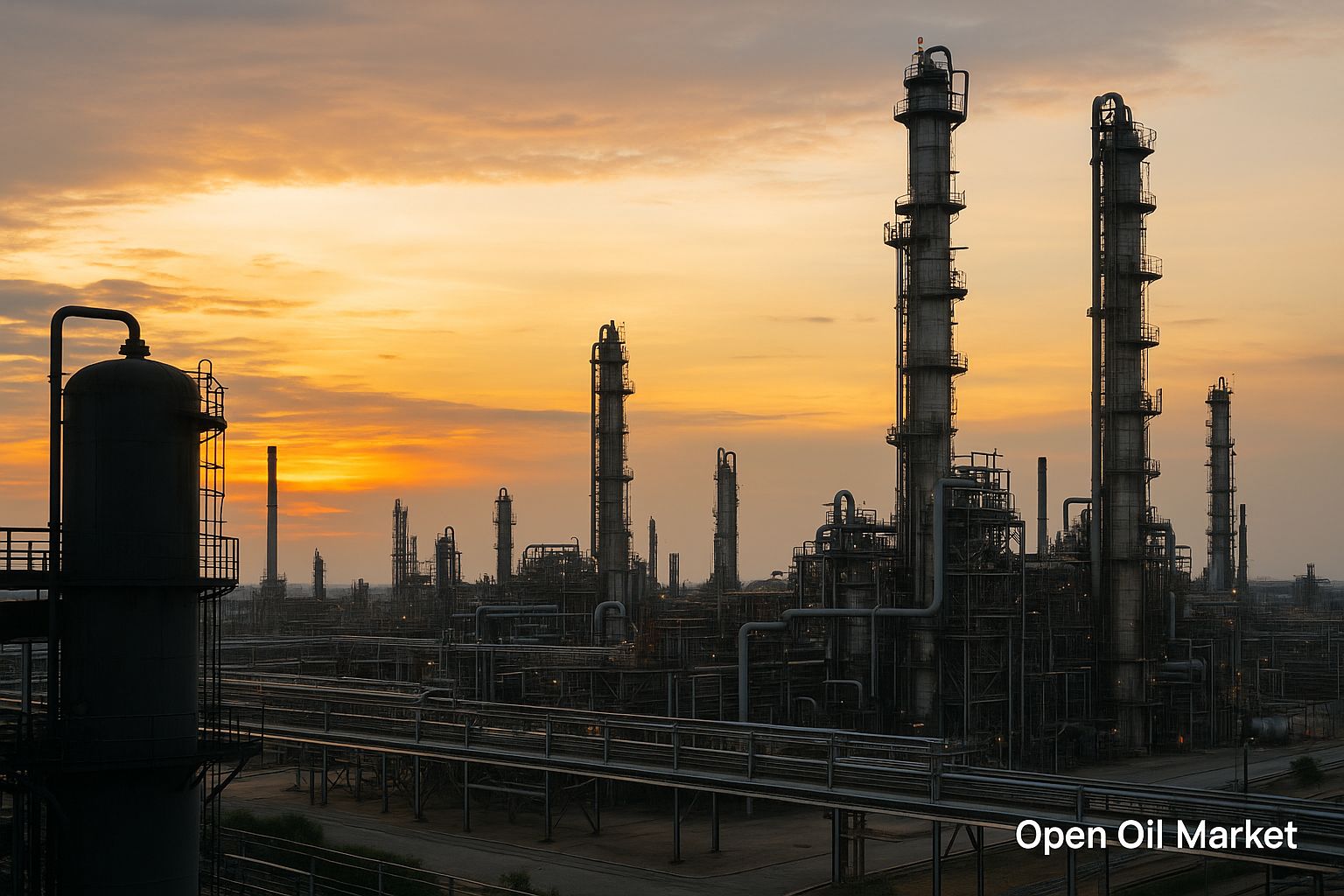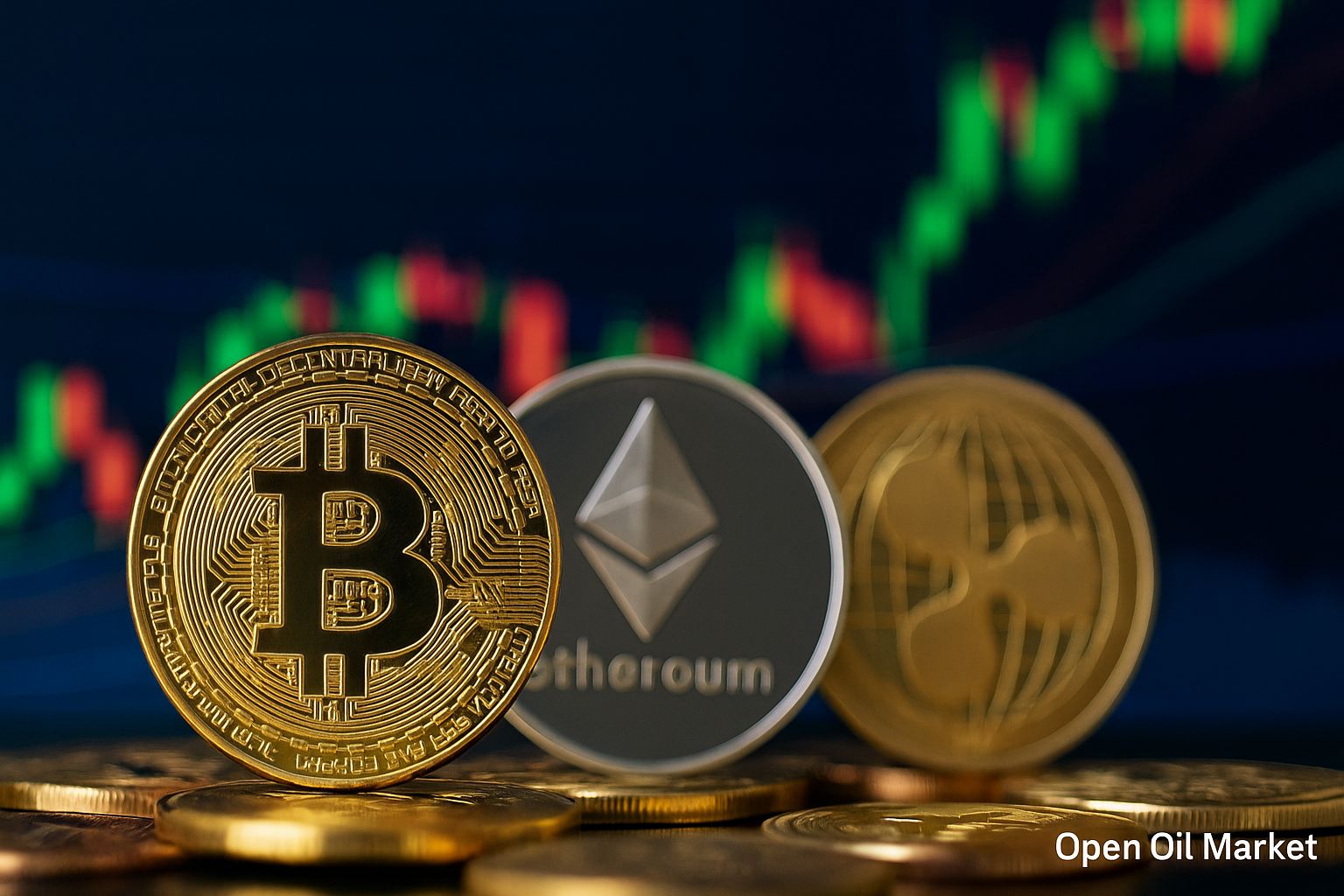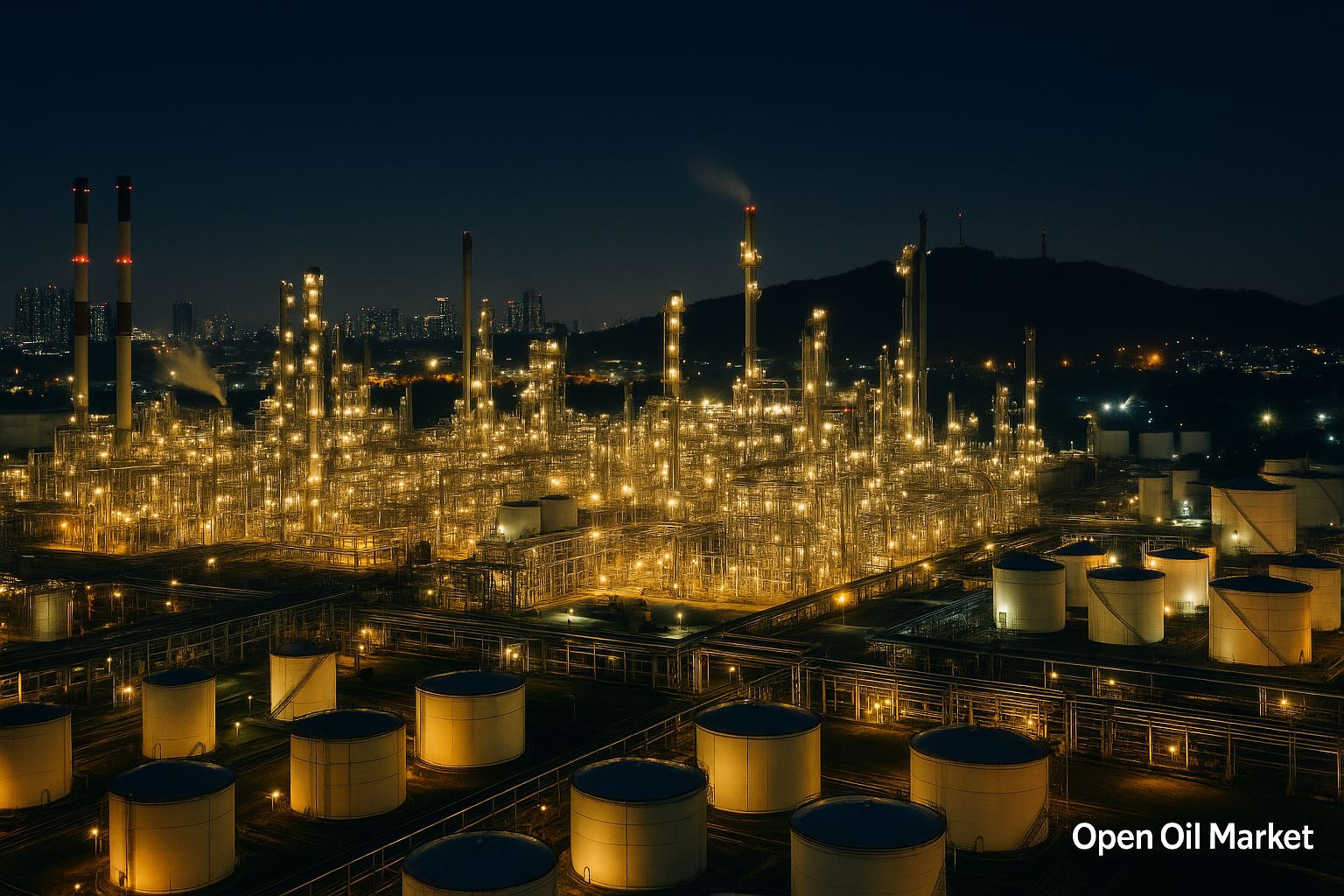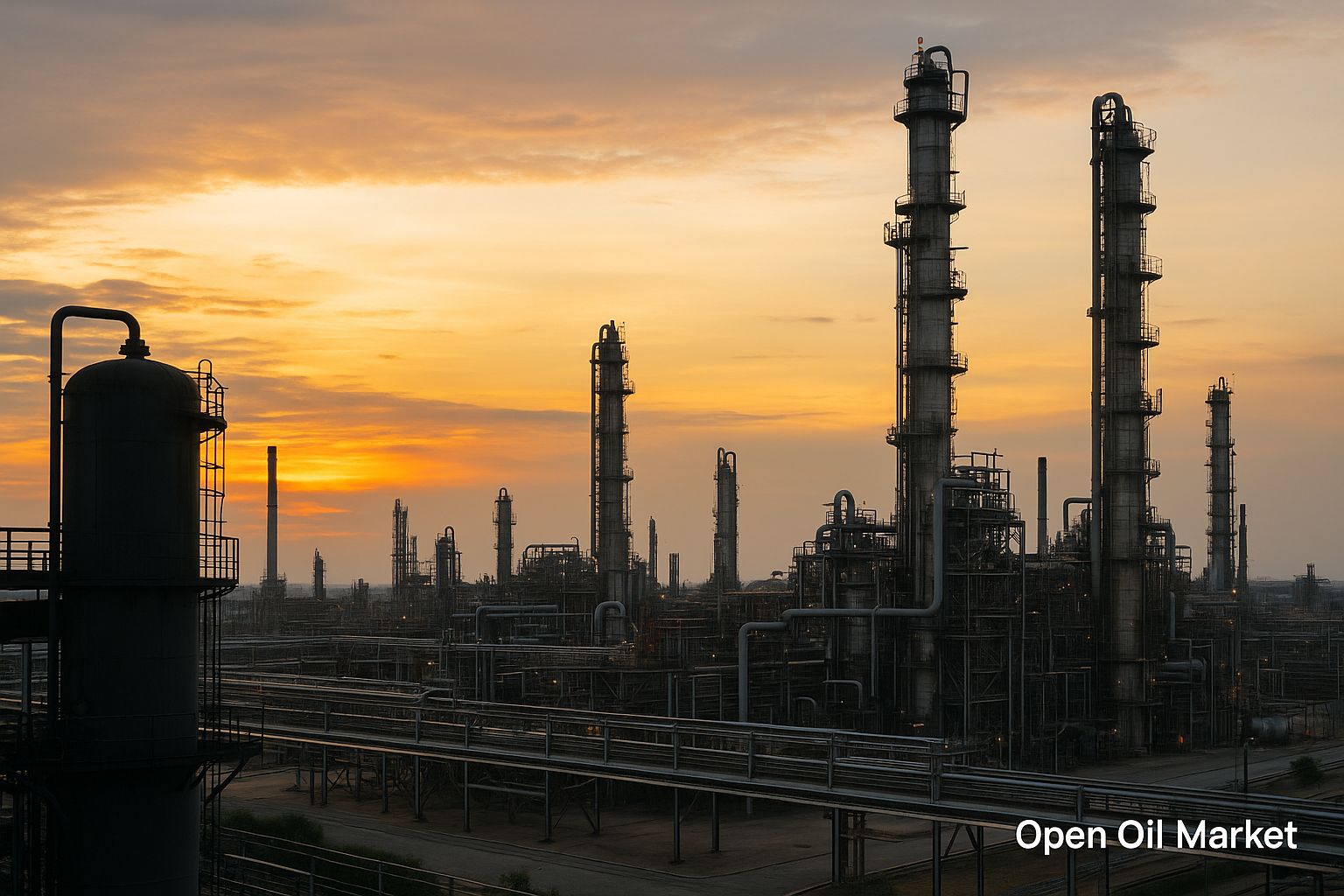
Energy Sector News, Thursday, August 28, 2025 — Sanction Pressure Mounts, Brent Stays Around $70, Gas Volatile Ahead of Winter, Russia Stabilizes Fuel Market
Current events in the fuel and energy sector (EES) on August 28, 2025 attract the attention of investors and market participants with conflicting signals. It has been exactly two weeks since the historic meeting of the Presidents of Russia and the United States in Alaska – no breakthrough in resolving relations was achieved, and the negotiation process is effectively frozen. Against this backdrop, expectations of further tightening of sanctions have increased: Washington is already moving from rhetoric to action, introducing new restrictive measures against Moscow's partners, which amplifies uncertainty in the energy markets. In contrast, European allies of the US are displaying restraint – the discussed twelfth package of EU sanctions reportedly does not include additional energy restrictions, as several EU countries fear negative consequences for their own markets. As a result, geopolitical tensions remain, casting a shadow over global energy.
Amid this backdrop, the global oil market shows signs of revival and stabilization after a summer slump. Prices for benchmark Brent crude are holding around the psychologically significant level of $70 per barrel, recovering lost positions from the previous weeks and nearing this level for the first time in a month. American WTI trades in the range of ~$64–66. Although current prices are about 10% lower than last year's levels, the return to summer highs signals a fragile balance of factors. The European gas market is also experiencing a new surge in prices ahead of the autumn-winter season: despite record gas volumes in storage, traders are factoring in the risks of potential winter supply shortages. At the same time, the global energy transition is gaining momentum – various countries are registering new records in electricity generation from renewable sources, although governments are still not abandoning traditional resources to ensure the reliability of energy systems.
In Russia, following a recent spike in fuel prices, authorities continue to implement a set of measures to stabilize the internal market. The first results are already appearing: the rise in gasoline prices has been slowed down, and a final equalization of the situation is expected in the coming weeks. According to government estimates, in September gasoline production will exceed domestic consumption – this will eliminate the deficit and cool retail prices. At the same time, accumulated reserves of petroleum products have reached record levels (over 5 million tons of gasoline and diesel combined), fully covering the needs of the domestic market. Control over the fuel sector remains at the highest level: relevant agencies are preparing new proposals to prevent similar crises in the future. Below is a detailed overview of key news and trends in the oil, gas, coal, electricity, and raw material sectors as of this date.
Oil Market: Prices Stabilized Around $70 Despite Oversupply
Global oil prices at the end of August are holding at a relatively stable level following a period of decline. The North Sea Brent blend is stabilized around $68–70 per barrel, returning to levels seen at the beginning of summer. This marks the first significant increase in oil prices in recent weeks, although they are still noticeably (~10%) lower than a year ago. Multiple factors are influencing price dynamics:
- Increase in Supply from OPEC+. The oil alliance is gradually ramping up production. In August, the combined output quota for key participants was increased by approximately 0.55 million barrels per day; a comparable increase is expected in September. OPEC+ has effectively confirmed its course towards gradual easing of restrictions that were in place from 2022 to 2023, leading to an increase in global oil and petroleum product inventories.
- Slowing Demand. Global oil consumption growth rates continue to decline. According to an updated forecast from the International Energy Agency (IEA), global demand will increase by only ~0.7 million barrels per day in 2025 (compared to a growth of 2.5 million b/d in 2023). OPEC has also revised its expectations to a demand increase of 1.2–1.3 million b/d for 2025. Reasons include an economic slowdown and the effects of high prices from previous years, which have encouraged energy conservation, as well as a weakening of industrial activity in China.
- Geopolitical Risks. The protracted conflict and sanctions pressure add heightened uncertainty to the oil market. The lack of progress in negotiations regarding Ukraine means that the West's stringent sanctions against the Russian oil and gas sector remain in place, which fuels prices. On the other hand, the very fact of periodic diplomatic contacts between leaders somewhat alleviates market panic, leading price fluctuations to remain relatively moderate – without sharp rallies or crashes.
Overall, the oil market remains in a situation close to an oversupply relative to demand. Even with the recent rise, oil prices are being kept significantly below peak levels seen in 2022 and 2023. Many analysts believe that if current trends continue, the average price of Brent could fall to the $55–60 per barrel range next year. Key indicators for the oil market in the near future will be further decisions from OPEC+, global economic dynamics, and the development of the geopolitical situation.
Gas Market: Record Stocks Do Not Guarantee Price Stability
The focal point of the gas market continues to be Europe. EU countries have been rapidly filling underground gas storage facilities throughout the summer in preparation for the autumn-winter period. Currently, the average filling level of European UGS facilities exceeds 92% – significantly higher than the target of 90% by the beginning of November. Such record stocks have previously helped to contain prices. However, the approach of the cold season is again provoking volatility in the gas market. In the absence of prospects for a quick resolution of the conflict, traders continue to factor in risks of supply disruptions into prices. An additional factor has been the planned technical works on Norwegian North Sea fields at the end of August, which temporarily reduced gas exports from Norway.
As a result, European gas exchange prices have turned upwards. Futures for the coming month at the Dutch hub TTF have climbed back above $400 per 1,000 cubic meters (approximately €38 per MWh), reaching maximum levels for the last month. Over the course of a week, prices rose from about $380 to $410 per 1,000 cubic meters, breaking several weeks of gradual decline. Although current levels are far from the record peaks of 2022, the market remains extremely sensitive to any risk factors. European countries must still compensate for falling volumes of Russian pipeline gas with record imports of liquefied natural gas (LNG), competing for LNG cargoes with Asian buyers at high prices. Notably, the rate of stock replenishment this summer has already been below last year’s levels (as storage is close to maximum capacity), limiting the space for further price smoothing. Experts anticipate that uncertainty surrounding future supplies and weather conditions will keep volatility high in the gas market this autumn and winter.
International Politics: Dialogue Stalled, Sanctions Intensify
The past two weeks following the unsuccessful summit between Russia and the USA have brought no progress in resolving the crisis – diplomatic dialogue is effectively at a standstill. On the contrary, signs of further escalation of the sanctions regime have emerged. The US has taken radical steps: President Donald Trump has ordered, effective August 27, to raise tariffs on certain goods from India by 25 percentage points (to 50%) as punishment for New Delhi's ongoing import of Russian oil. This unprecedented move demonstrates Washington's readiness to impose secondary sanctions against major consumers of Russian energy resources. India has expressed regret and protested the sharp tariff increase, stating that purchases of Russian oil are dictated by its national economic interests and cannot be abruptly halted.
US European allies, on the other hand, are acting more cautiously. The discussed new – twelfth – package of EU sanctions reportedly does not include additional restrictions on Russian energy imports. EU countries are effectively shifting the initiative for the strictest measures onto Washington, given the dependence of some European economies on critically important energy supplies. Thus, the sanctions standoff in the energy front remains tense: the US is increasing pressure on buyers of Russian oil and gas, while Europe avoids extreme steps, fearing repercussions for its own energy security.
At the same time, media reports are circulating about behind-the-scenes contacts between Moscow and Washington on energy issues that could be part of a broader agreement. Sources indicate that discussions in August centered on potential deals, such as the return of American company ExxonMobil to the Sakhalin-1 project or the supply of equipment from the US for Russia's Arctic LNG 2 project. An unconventional step was even proposed regarding the possibility of increasing exports of Russian nuclear fuel for nuclear power plants to the US. While there has been no official confirmation of these discussions, the very rumors point to a search for pathways towards any rapprochement in the energy sphere amid political standoffs.
Asia: India Resists Pressure, China Increases Imports and Production
- India: Despite unprecedented external pressure, New Delhi is not in a hurry to abandon profitable Russian energy supplies. The Indian government explicitly states that a sharp reduction in oil and fuel imports from Russia is unacceptable, as these supplies are critically important for the country’s economy. Indian oil refineries continue to purchase Russian Urals crude at a significant discount — traders estimate it is about $5 cheaper than Brent, which allows for increases in shipment volumes. Moreover, Indian imports of Russian petroleum products (diesel, gasoline) remain high, satisfying domestic demand. At the same time, the country's leadership is taking steps to reduce long-term dependence on imports. Prime Minister Narendra Modi announced on Independence Day, August 15, the initiation of a large-scale program for the exploration of deepwater oil and gas fields. The state company ONGC has already begun drilling ultra-deep wells on the shelf of the Andaman Sea, and the initial results are deemed encouraging. The program's goal is to open new hydrocarbon reserves and strengthen India’s energy independence. Additionally, at a meeting of foreign ministers in Moscow on August 21, India and Russia agreed to deepen trade and economic cooperation, clearly indicating that New Delhi intends to maintain energy ties with Moscow despite external pressure.
- China: The largest economy in Asia is also actively seizing the opportunity to enhance its energy security. Beijing has not joined the sanctions against Moscow and has increased its imports of Russian energy resources at reduced prices. According to customs statistics, in 2024 China imported about 213 million tons of oil and 246 billion cubic meters of natural gas — a respective increase of 1.8% and 6.2% year-on-year. Import volumes continue to rise in 2025, although the pace has somewhat slowed due to broader economic stagnation. Concurrently, China is increasing its domestic production of oil and gas, striving to reduce its reliance on external supplies. Despite record investments in renewable energy, the country is still relying on traditional sources to meet the basic parts of its demand. The Chinese government is investing significant funds in geological exploration and the development of fields, tapping into hard-to-access reserves. Thus, the two largest consumers in Asia – India and China – continue to play a key role in the global raw materials market, combining import growth with the development of their own resource base.
Energy Transition: Records in ‘Green’ Generation Supported by Traditional Energy
The global transition to low-carbon energy is maintaining its pace. Several countries are reporting record levels of electricity generation from renewable sources (RES). By the end of 2024, total generation from solar and wind plants in the European Union surpassed that from coal and gas-fired power plants for the first time. This trend continues in 2025: the commissioning of new capacities is increasing the share of “green” energy in the energy balance while coal usage is gradually declining (after a temporary rise during the 2022–2023 crisis). In the USA, renewable energy is also setting records — in the first half of 2025, over 30% of electricity was generated from RES, with total generation from solar and wind overtaking that from coal-fired power plants for the first time. China, being the world leader in installed renewable capacity, adds tens of gigawatts of solar panels and wind generators each year, continuously breaking its own records in “green” generation.
Massive investments are accelerating the energy transition. According to the IEA, total global investments in energy in 2025 will exceed $3.3 trillion, with more than half allocated to RES projects, modernization of grid infrastructure, and energy storage systems. In the USA, about 33 GW of new solar power plants are set to be brought online within the year – a record figure that constitutes nearly half of all newly installed capacities. Nevertheless, energy systems still need traditional power plants to maintain grid stability. The increasing share of solar and wind creates new challenges for balancing: during hours of low solar and wind generation, reserves are required, and gas and sometimes even coal-fired plants take on the load. This past winter, some European countries had to temporarily ramp up electricity generation at coal plants during windless weather, despite the environmental costs. To mitigate such risks, governments are investing in energy storage systems (industrial batteries, pumped hydroelectric storage) and smart grids capable of flexibly managing demand. Experts forecast that by 2026–2027 renewable energy sources may emerge as the world's leading electricity generators, finally surpassing coal. However, in the near term, the role of traditional generation remains significant – it is necessary as insurance against outages and peak loads. Thus, the global energy sector is confidently moving towards a “green” future, although it requires a delicate balance between new technologies and proven resources.
Coal: Steady Demand Supports the Global Market
Despite the rapid development of renewable energy, the global coal market maintains relative stability due to still high demand for this resource. The need for coal is particularly significant in the Asia-Pacific region, where economic growth and energy consumption fuel intensive use of coal generation. China, the world's largest consumer and producer of coal, is projected to produce over 4 billion tons in 2025, covering most of its internal demand. However, this volume is barely enough during peak periods (for example, during unusually hot seasons, when electricity consumption for air conditioning rises), prompting the country to continue importing coal for reserves. India, possessing significant domestic reserves, is also increasing coal consumption: over 70% of its electricity is still generated by coal-fired power plants, and absolute coal consumption is rising along with economic growth. Other developing economies in Asia (Indonesia, Vietnam, Bangladesh, among others) continue to build new coal power plants to meet growing needs of industry and populations.
Global coal market supply is generally keeping pace with demand, maintaining prices within a relatively narrow corridor. Major coal exporters – Indonesia, Australia, and Russia – reliably supply the market, ramping up production under favorable conditions. However, the long-term prospects for the coal industry remain limited: an increasing number of countries are adopting strategies to reduce coal usage for climate goals. Nonetheless, in the short term, steady demand in Asia will continue to support the global coal market.
Russian Oil Products Market: Initial Results of Measures and Hopes for Surplus
In the internal oil products market of Russia, emergency steps are being taken in August to normalize fuel prices. In the first half of the month, wholesale exchange prices for gasoline hit historical highs, even exceeding peaks from 2023. This was triggered by a combination of factors: a sharp increase in summer demand (due to the holiday season and an active harvesting campaign in agriculture), scheduled repairs at several large refineries, as well as unscheduled downtimes from accidents and drone attacks. Local supply disruptions in some regions led to panic on the exchange. In response, the government quickly intensified manual regulation of the fuel market, implementing the following measures for rapid stabilization:
- Export Ban on Fuel. A full temporary ban on the export of gasoline and diesel fuel, introduced in early August, has been extended at least until the end of September. This restriction applies to all producers — from vertically integrated oil companies to independent mini-refineries. This measure redirects to the domestic market those volumes of fuel that were previously shipped abroad (about 200–300 thousand tons of gasoline monthly).
- Priority for Domestic Supply. Oil companies are instructed to prioritize saturating the internal market. Authorities have tightened control over fuel distribution, banning the practice of wholesale "swapping" (mutual exchange purchases between suppliers, which inflated prices). The Ministry of Energy, the Federal Antimonopoly Service, and the St. Petersburg Commodity and Raw Materials Exchange are developing long-term measures to transition to direct contracts between refineries and consumers to eliminate intermediaries.
- Compensation for Producers. Financial support mechanisms are still in effect. Budget subsidies and adjustments to the damping mechanism (reverse excise tax) compensate refineries for lost export revenues, encouraging them to direct more gasoline and diesel to domestic gas stations. At the end of August, the government expanded the acceptable corridor for exchange prices deviation from indicative ones (from 10% to 15% for gasoline and from 20% to 25% for diesel) — this allows refineries to receive compensation even while maintaining high prices and not reducing fuel production.
- Utilization of Reserves and Imports. To rapidly cover local shortages, additional resources are being engaged. Regions are recommended to procure fuel from Belarus if necessary and to utilize stocks from the state reserve. A specialized task force headed by Deputy Prime Minister Alexander Novak is operating at heightened readiness – at the end of August, the commission reconvened for an analysis of the situation and to issue new orders to suppliers.
The complex of implemented measures is already yielding results. Despite the surge in exchange prices, retail gasoline prices have increased by only ~5% since the beginning of the year, which aligns with overall inflation. The extreme demand at gas stations in the most problematic regions has been mitigated by redistributing fuel from surplus areas. The government expects that in the coming weeks the market will finally stabilize and return to equilibrium. Some analysts note that due to the surplus refining capacity in Russia, even unscheduled halts at some refineries do not lead to actual gasoline shortages in the country. As repairs are completed and production is restored, overall output of oil products in September will exceed domestic needs. Thus, the prerequisites for further price increases will be eliminated, and the situation in the fuel market will stabilize.
Telegram Channel "Open Oil Market" – for those who want to stay informed about the latest news in the energy sector. Subscribe to our channel to receive timely analysis on oil, gas, petroleum products prices, market reviews of electricity and RES, as well as insider information on key trends in the global energy landscape. Join the Open Oil Market community and stay one step ahead in the oil and gas industry!




